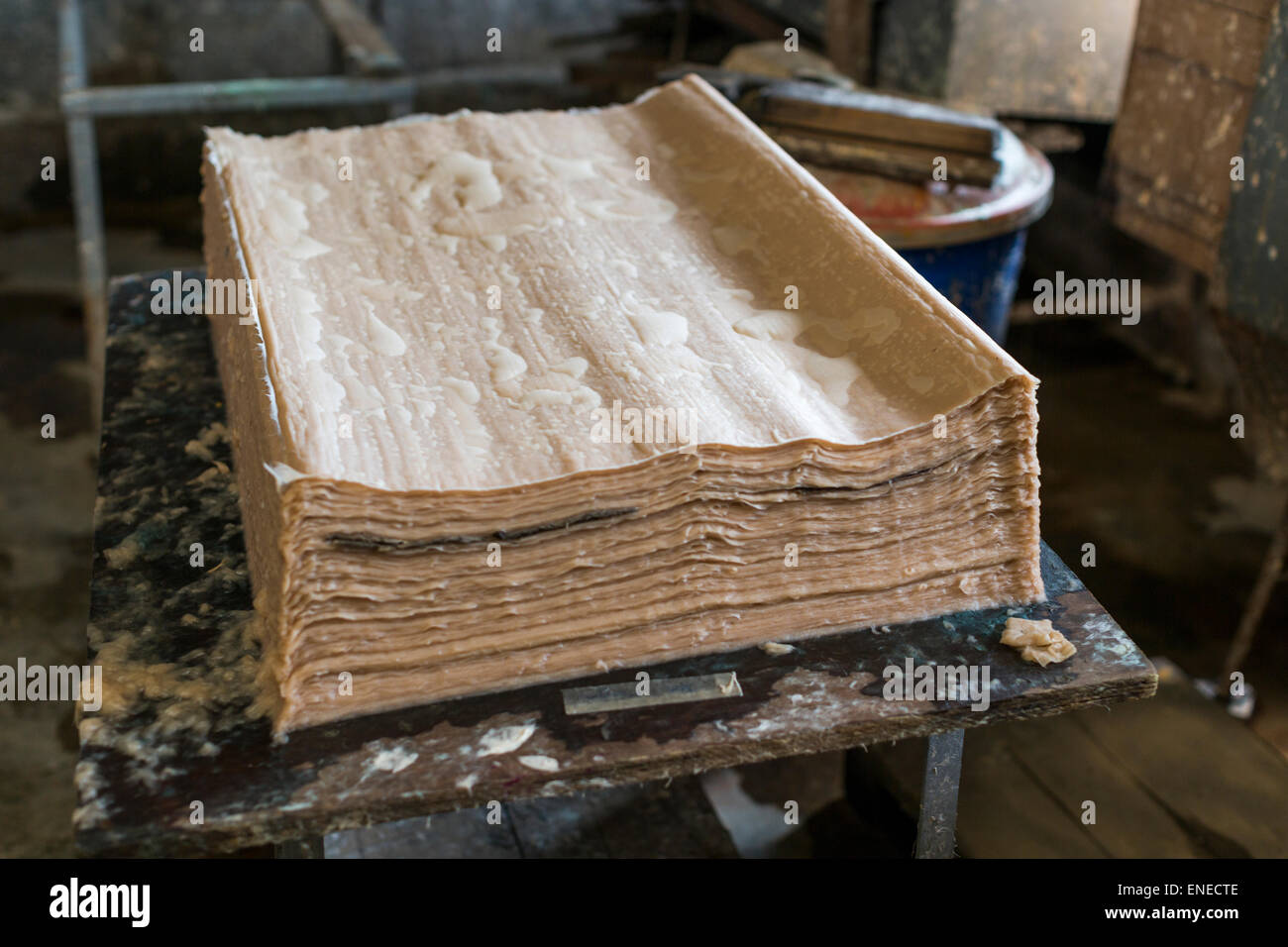What Is Handicraft?

The term "craft" denotes a skill, usually employed in branches of the decorative arts (eg. ceramics), or in an associated artistic practice (eg. lace-making). A key feature of crafts is that they involve a high degree of "hands-on" craftsmanship (hence the colloquial term "handicrafts) rather than just skill with a machine.
Some crafts that are practiced by artists working alone are sometimes referred to by the vague term "studio craft". Metal work, wood turning, glass blowing, and glass art are examples of "studio crafts", as is pottery - notably the studio pottery movement exemplified by Bernard Leach in Britain.
The very first handicrafts to be made by humans started right at the dawn of mankind’s evolution -marking it actually, induced by the need of food,the need of tools that were to be forged in order to hunt for prey,and the primal instinct of survival. Around 2.6 million years ago early Homo Habilis relied on objects from their environment and shaped surrounding materials to their will,which resulted in the creation of the first handicrafts ever made:TOOLS! Tools and weapons like spears and axes which they used in order to survive,to hunt,to protect themselves in their wild habitats, and to climb over predators higher than themselves on the food chain. YES,those were handicrafts, and they built a creative artistic basis for the evolution of the hand-made craft.
As mankind evolved, so did the craft of hand-made,it played a part that grew bigger and bigger in human societies flourishing into a way of portrayal of art,culture and heritage of individual societies. In addition to conveying craftsmen’s opinions,emotions,and a great way to document historical snippets around the world and throughout the times. The craftsman in his work relies on their individual mental and manual skills which grow through the practice of the craft itself.
They use raw ores and substances from their surrounding environment and shape them into expressive pieces of art, which in turn fill their hearts with joy and a sense of fulfillment when they eventually see the final form of the artifacts their hands have made come to realization. The craft gives its master a greater sense of value and empowers their confidence in themselves, especially when their productions are difficult or impossible to achieve using machines and an even greater sense of accomplishment when those productions benefit others in their societies. That is why handicrafts are not of great expense but of great value,especially those that aren’t widely practiced and those hard to learn and create, and those that belong to a craft that is more difficult to preserve.
Handicraft In Bhutan |
Purpose:
Handicraft is very important because represents our culture and tradition. It promotes the heritage of a country through the use of indigenous materials and it preserves traditional knowledge and talents. Handicraft is the expression of our history and I think we must encourage artisans to continue the craft production to show the beauty of this art.
Bhutanese Handmade Product |
Short Clip on handicraft of Bhutan
Type Of Crafts:
1. Textiles
Appliqué, Crocheting, Embroidery, Felt-making, Knitting, Lace-making, Macramé, Quilting, Tapestry art, Weaving.
Bhutanese Textile |
2. Woodcraft
Wood-carving, Wood-turning, Cabinet making, Furniture making, lacquer ware.
Bhutanese traditional Wine Container |
3. Papercraft
Paper Modelling, Collage, Decoupage, Origami paper folding, Papier-mâché.
Paper Craft |
4. Pottery and Glass Crafts (see also Ancient Pottery)
Ceramics (earthenware, stoneware, porcelain), Mosaic Art, Glass Beadmaking, Glass Blowing, Glass Etching, (see Stained Glass Art Materials/Methods).
5.Jewellery
Includes metalwork involving processes like embossing, repoussé work, engraving, enamelling (types include champlevé, basse taille, cloisonné, plique-à-jour), granulation and filigree decoration. For more, see: Jewellery: History, Techniques.
 |
6. Other Examples of Craftwork
Basket weaving, Beer-making, Book-binding, Doll-making, Enamelling, Floral Design, Ikebana, Jewellery-making, Knife-making (cutler), Leatherwork, Metalwork, Model-making, Tattoo Designing, Toy-making.
Basket weaving, Beer-making, Book-binding, Doll-making, Enamelling, Floral Design, Ikebana, Jewellery-making, Knife-making (cutler), Leatherwork, Metalwork, Model-making, Tattoo Designing, Toy-making.
 |
Short Clip On Handicraft of Bangladesh

No comments:
Post a Comment